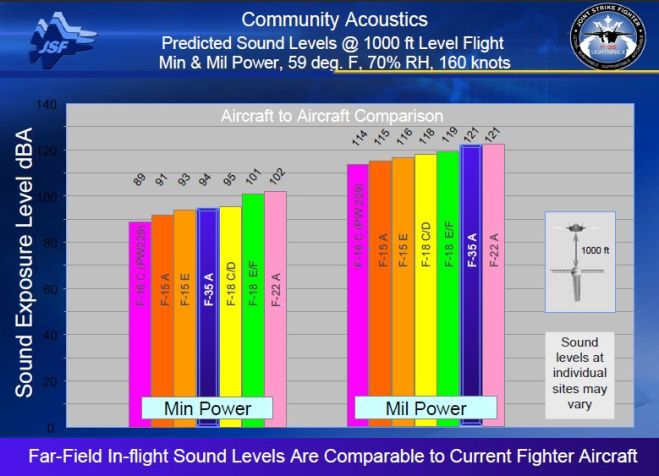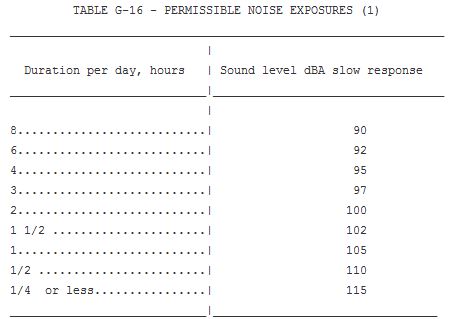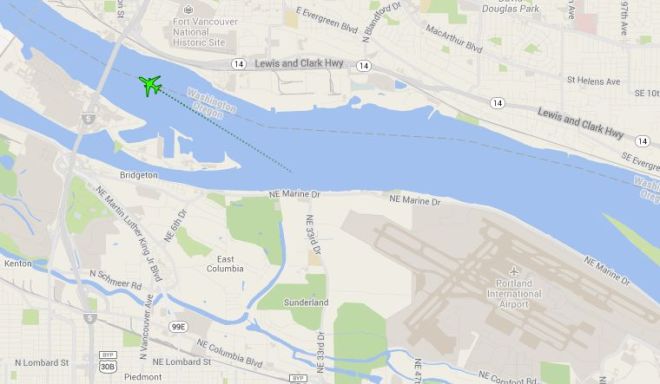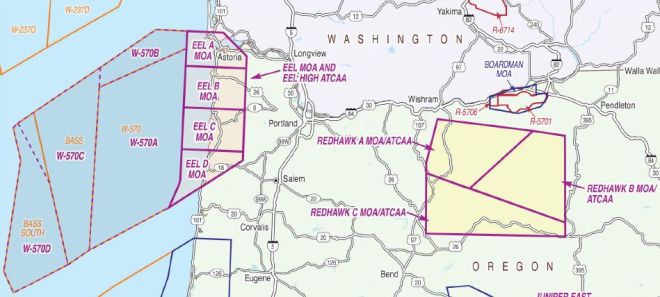 Hayden Island is next to the flight path, along the Columbia River, for aircraft arriving and departing Portland International Airport. It’s a noisy environment.
Hayden Island is next to the flight path, along the Columbia River, for aircraft arriving and departing Portland International Airport. It’s a noisy environment.
Using WebTrak you can track the flight activity in to and out of Portland International Airport.
PortlandMaps.com shows flight information under the “noise” tab when searching specific addresses. Noise comes with the territory, but the F-15s are something else.
The F-15c jets are part of the Pacific Theater Aerospace Control Alert and provide 24/7 air monitoring from Northern California to British Columbia. They’re basically part of NORAD (North American Air Defense).
From casual observation, noise in excess of 100 dB will often exceed a cumulative total of more than 15 minutes/day, especially if the National Guard has joint training exercises.
By far the loudest aircraft heard over the island are the F-15 Eagles flown by the Oregon Air National Guard’s 142nd Fighter Wing. At takeoff, an F-15 creates a deafening 116 db when 1000 ft overhead. They frequently fly three or four at a time, multiple times a day.
An F-15 taking off from PDX is about 1000 ft above Hayden Island residents. The Sound Exposure Level (SEL) at 1000 ft is about 115 dB for the F-15 and 118 dB for the F-18 Hornet. That noise contour is far higher than the 65 decibels allowed by the City of Portland.
The Portland noise code clearly states; “no person shall cause or permit the operation of an impulsive noise source which has a peak sound pressure level in excess of 100 dB during day hours or 80 dB during night hours.”
The OSHA and EPA sounds levels are considered “acceptable” by averaging them over a day. If 115 dB aircraft noise lasts 30 seconds (x 3 aircraft or 1.5 min.), some 10 times a day (15 minutes total), it would appear to be in violation of federal law.
It’s not the airport that’s causing the noise problem; it’s the F-15s.
Using WebTrak you can track the flight activity into and out of Portland International Airport. Green aircraft are taking off, red aircraft are landing. PDX Noise Alerts provide information to the community.
The Citizen Noise Advisory Committee (CNAC) is the official forum to address the community’s aircraft noise concerns. Local jurisdictions and the Port of Portland appoint the 15-member committee to represent residential and business concerns.
Ron Schmidt is the representative from Hayden Island. The Port of Portland’s Noise Management Department can be contacted at 503.460.4100 (Oregon) / 800.938.6647 (Washington) (pdxnoise@portofportland.com).
Jason Schwartz, the noise-management manager for the Port of Portland, says the sound made by an F-15 flying overhead is “equivalent to the sound of a car driving by”.
That’s absurd. An F-15 is about 20db louder than commercial jets. When an F-15 flies over, you can’t hear a person yelling, right next to you.
The Oregon Air National Guard’s 142nd Fighter Wing is based at the airport. In the summer of 2014, they hosted F-18 Hornets from Lemoore Naval Air Station, California. Aircraft from the 173rd Fighter Wing, based at Klamath Falls, and other military transients also use the National Guard facilities.
Night flying exercises are conducted almost monthly, using night vision goggles. They can extend until 10 p.m.
An F-15 burns fuel at four gallons per second — 14,400 gallons per hour. So 4 aircraft flying 3 hours use about 172,000 gallons of fuel. At $6/gallon that’s $1,036,800 a day. Of course, that’s a small part of the $23,000 hourly cost of operations for each aircraft.
That’s a lot of free government money. What are you getting? Don’t ask. That’s unpatriotic. The F-35 has been one of the most expensive military projects in history, and will cost upwards of $1.45 trillion by the time it’s over. Average college tuition is $6,122 at public institutions, so for every kid in college to go to a state school (20 million people), it would run around $1.5 trillion for 12 years.
Perhaps who we’re really protecting is Lockheed Martin stockholders.
The 142nd unit, with 1,000 personnel, guards Northwest skies from enemy invasion and supports the Governor during unrest with overwhelming air superiority.
The proposed Oregon Airspace Initiative would provide more airspace for the Oregon Air National Guard training in Central Oregon and along the Oregon coast. Previously the Air National Guard trained further from the coast.
I would be surprised if the Port of Portland is in compliance with noise standards when the Air National Guard practices. The same racket may soon destroy the tranquility of the Oregon coast.
And for what?










